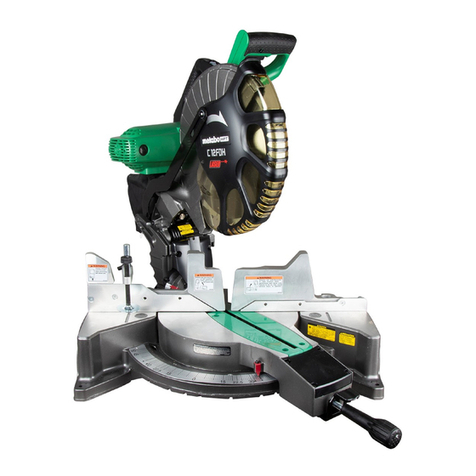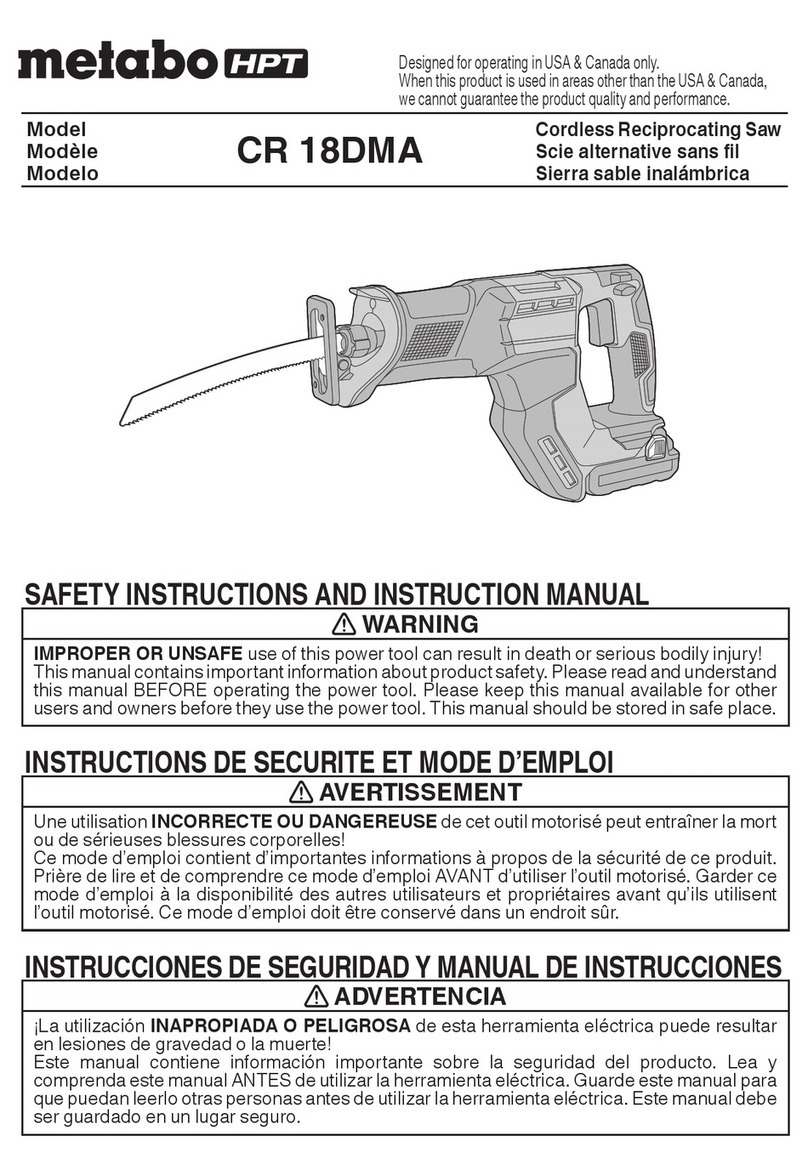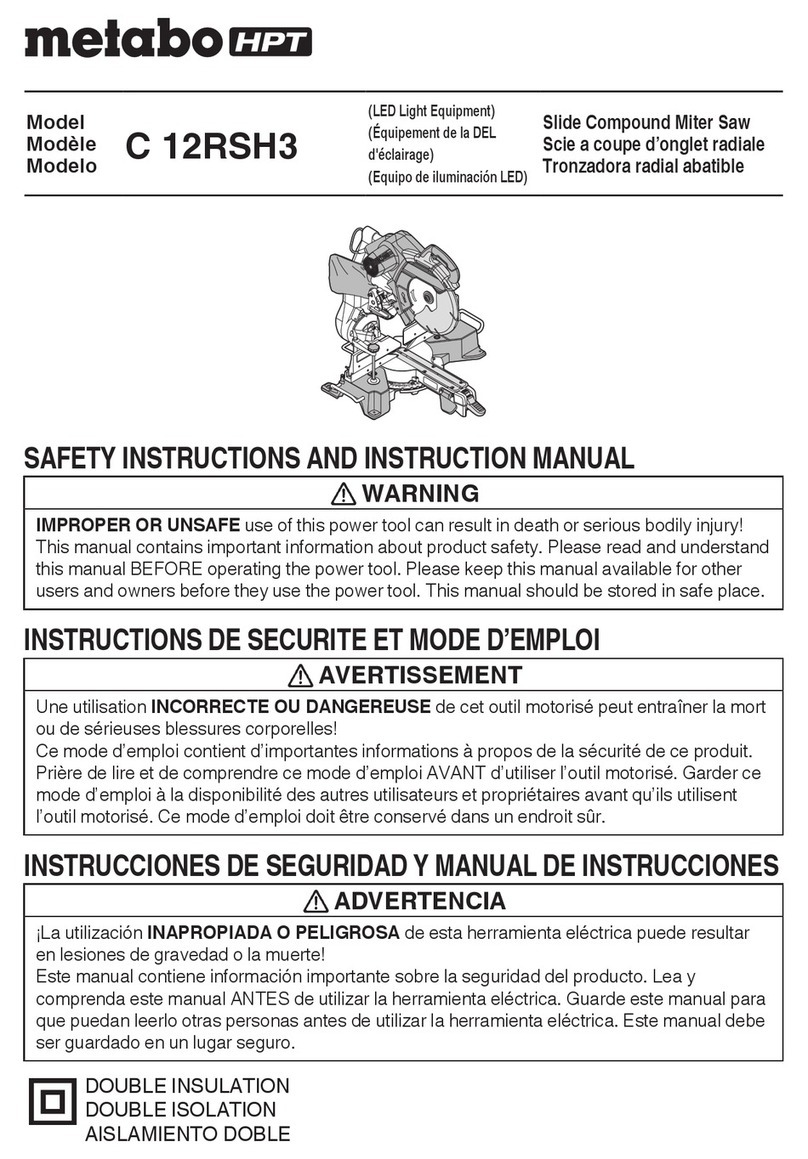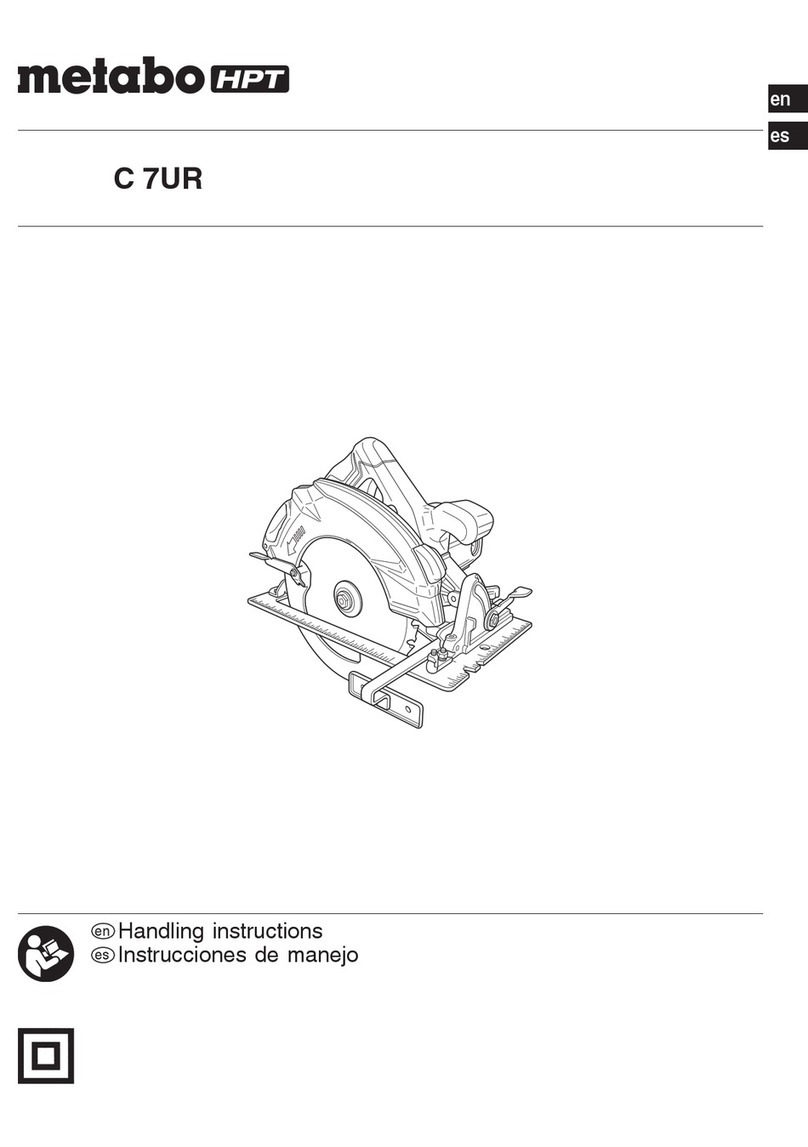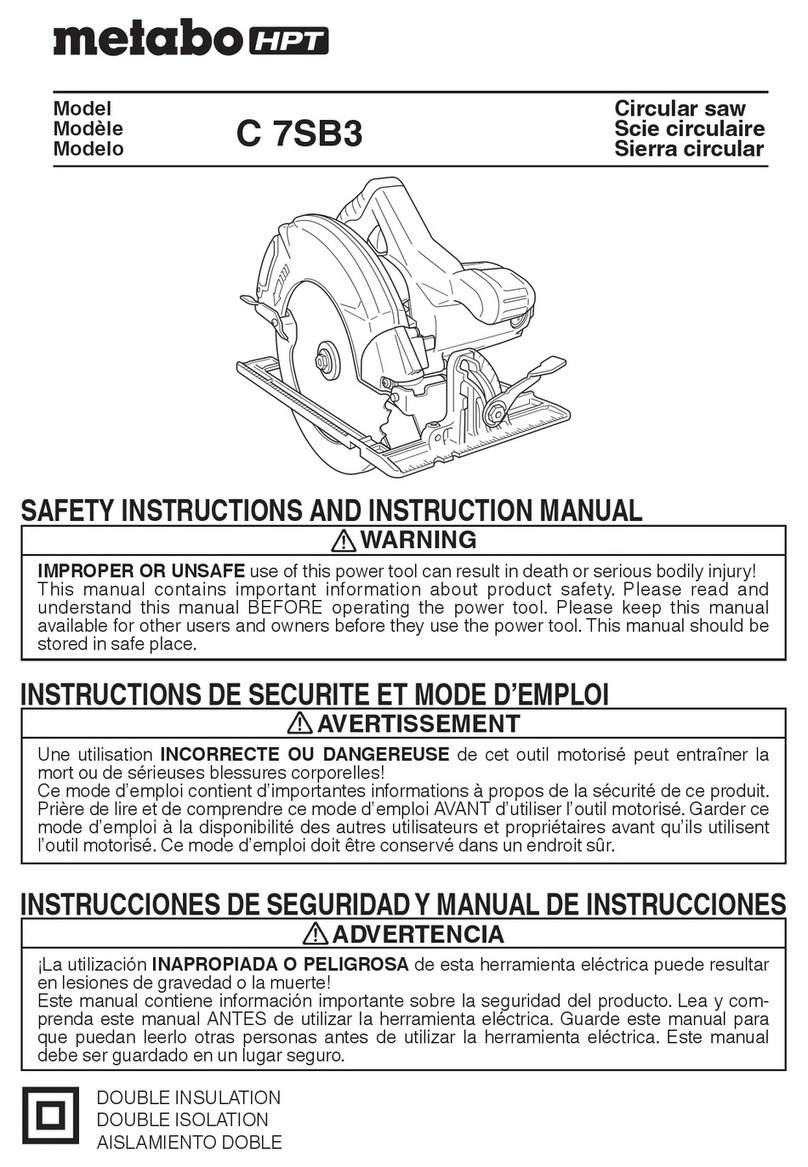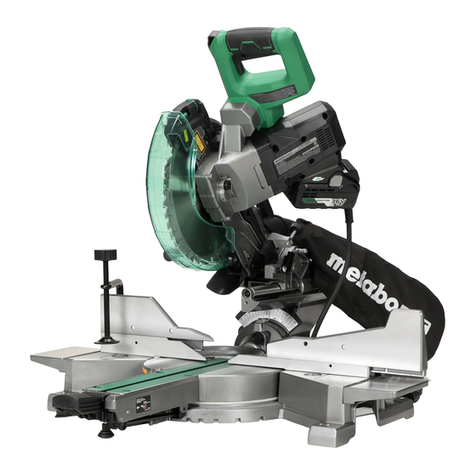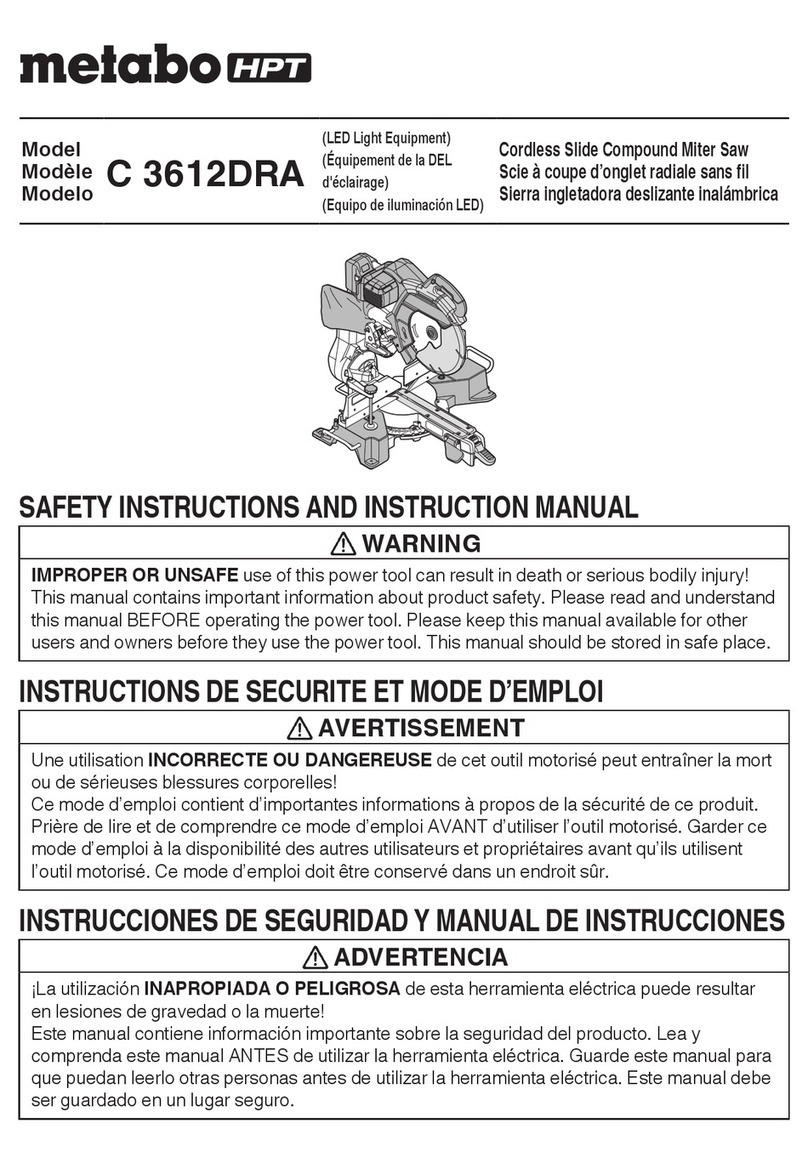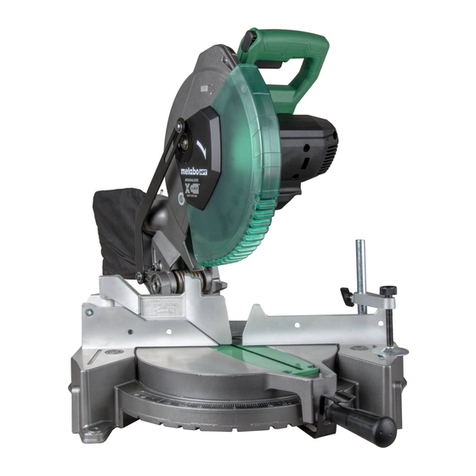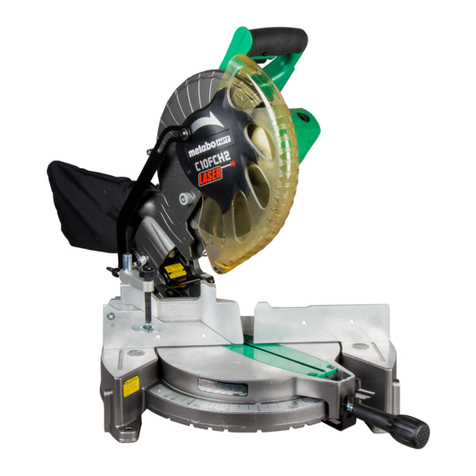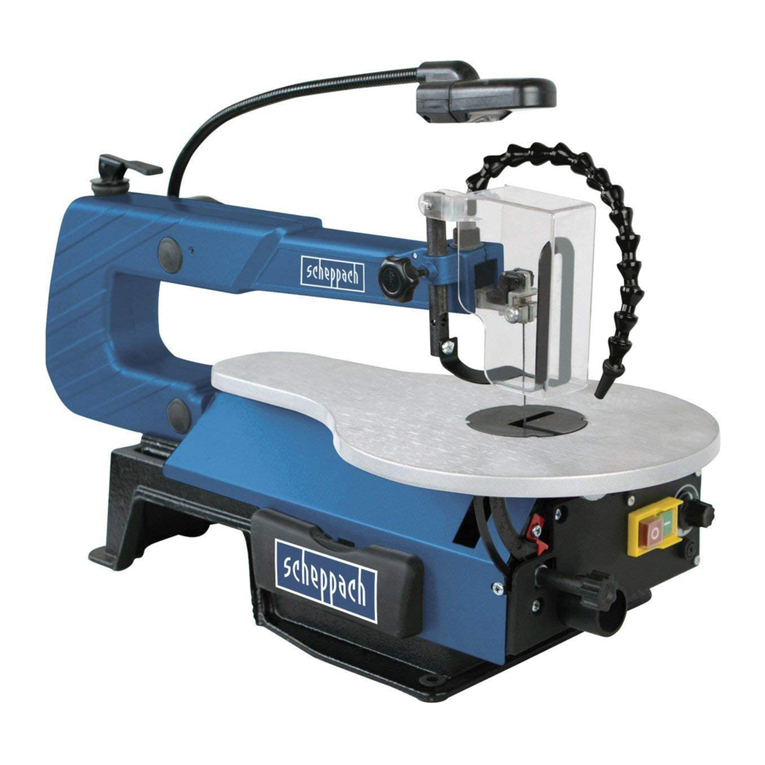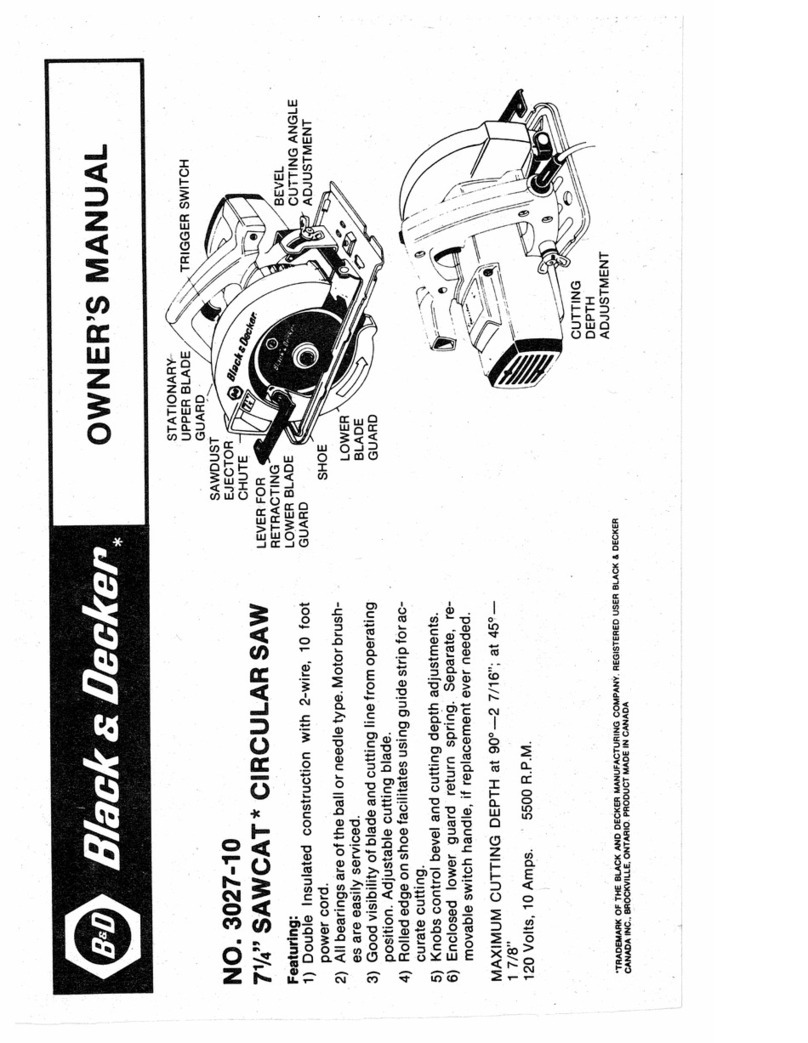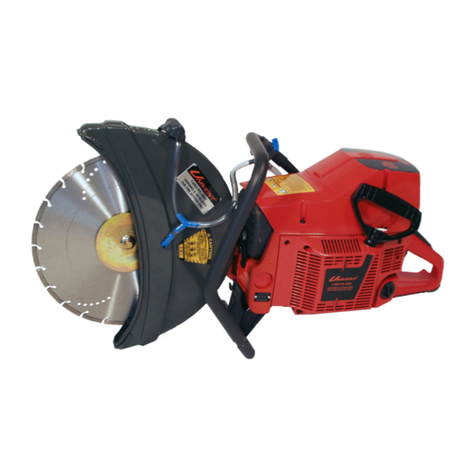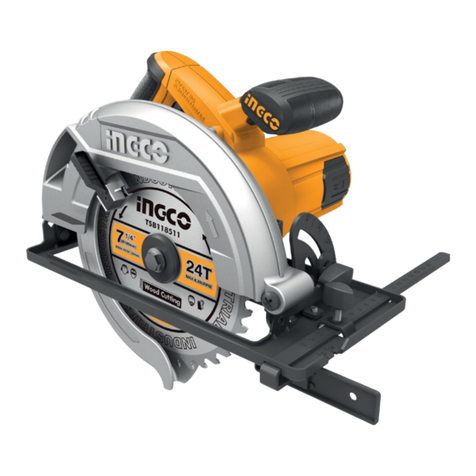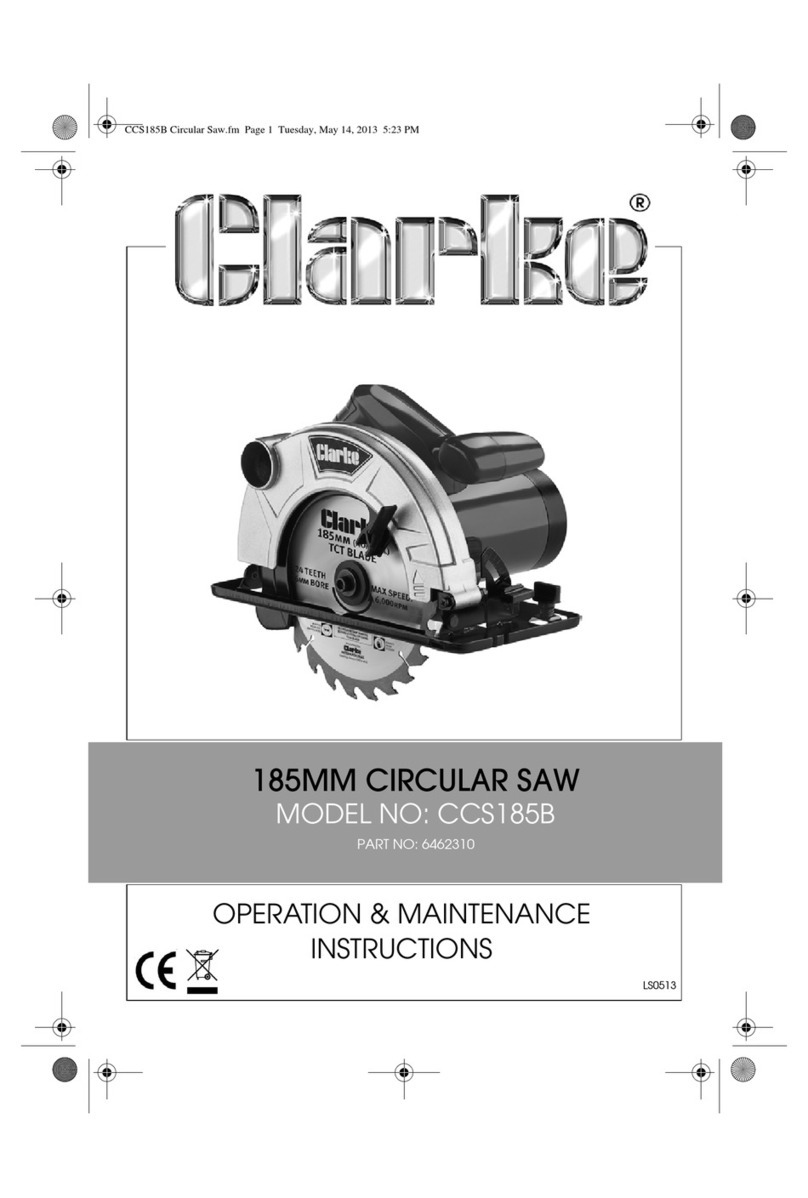
3
English
IMPORTANT SAFETY INFORMATION
Read and understand all of the safety precautions, warnings and operating instructions in the Instruction Manual before operating or maintaining this power
tool.
Most accidents that result from power tool operation and maintenance are caused by the failure to observe basic safety rules or precautions. An accident can
often be avoided by recognizing a potentially hazardous situation before it occurs, and by observing appropriate safety procedures.
Basic safety precautions are outlined in the “SAFETY” section of this Instruction Manual and in the sections which contain the operation and maintenance
instructions.
Hazards that must be avoided to prevent bodily injury or machine damage are identified by WARNINGS on the power tool and in this Instruction Manual.
Never use this power tool in a manner that has not been specifically recommended by metabo HPT.
MEANINGS OF SIGNAL WORDS
WARNING indicates a potentially hazardous situations which, if ignored, could result in death or serious injury.
CAUTION indicates a potentially hazardous situations which, if not avoided, may result in minor or moderate injury, or may cause machine damage.
NOTE emphasizes essential information.
SAFETY
IMPORTANT SAFETY INSTRUCTIONS FOR USING ALL POWER TOOLS
READ ALL OF THE WARNINGS AND OPERATING INSTRUCTIONS IN THIS MANUAL BEFORE OPERATING OR
MAINTAINING THIS TOOL:
WARNING:
When using this electric tool, take all necessary precautions to minimize the risk of electric shock or other personal injury.
In particular, always comply with the following safety rules:
1. ALWAYS KEEP GUARDS IN PLACE and in working order.
2. ALWAYS REMOVE ADJUSTING KEYS AND WRENCHES BEFORE
STARTING TOOL. Always confirm that all keys and adjusting wrenches
have been removed from the tool before it is turned on.
3. ALWAYS KEEP WORK AREA CLEAN. Avoid injuries by not cluttering
the work areas and work benches.
4. NEVER USE TOOL IN HAZARDOUS ENVIRONMENTS. Never use the
power tool in damp or wet places and never expose it to rain. Always keep
the work area well lighted.
5. NEVER PERMIT CHILDREN OR OTHERS TO LOITER NEAR THE
WORK AREA. Keep all people (especially children) away from the work
area. Always unplug unattended tools and keep the work place tamper-
proof by installing locks on the doors and on the master switches.
6. NEVER FORCE THE TOOL. It will do the job better and more safely if it
is operated at the rate for which it was designed.
7. ALWAYS USE THE RIGHT TOOLS. Never force a tool or an attachment
to do a job for which it was not designed.
8. ALWAYS WEAR PROPER APPAREL WHEN WORKING WITH THE
TOOL. Never wear loose clothing, gloves, neckties, rings, bracelets or
other jewelry which may get caught in the moving parts. Always wear
non-slip footwear, preferably with steel toes. Wear protective hair covering
to contain long hair.
9. ALWAYS WEAR EYE PROTECTION WITH SIDE SHIELDS THAT
MEETS THE REQUIREMENTS OF ANSI STANDARD Z87.1 WHEN
WORKING WITH THE TOOL TO PREVENT EYE INJURY. Ordinary
eyeglasses do not provide adequate protection because they do not
contain impact resistant safety glass. Also, use a face mask for additional
safety and wear a dust mask if the cutting operation produces dust.
10. ALWAYS SECURE THE WORKPIECE TO THE FENCE OR THE TABLE.
Use clamps or a vise to hold the workpiece in place. It is safer than using
your hand and it frees both hands to operate the tool.
11. NEVER OVERREACH. Always keep proper footing and balance when
working with the tool.
12. ALWAYS MAINTAIN TOOLS WITH CARE. Always keep tools sharp and
clean for the best and safest performance. Always follow instructions for
lubricating the tool and for changing accessories.
13. ALWAYS DISCONNECT THE TOOL before servicing and before
changing blades or other accessories.
14. NEVER RISK UNINTENTIONAL STARTING WHEN PLUGGING IN
THE TOOL. Always confirm that the switch is in the OFF position before
inserting the power plug into the receptacle.
15. ALWAYS USE RECOMMENDED ACCESSORIES ONLY WHEN
OPERATING THIS TOOL. Consult this instruction manual for descriptions
of recommended accessories. To avoid personal injuries, use only
recommended accessories in conjunction with this tool.
16. NEVER STAND ON THE TOOL. Prevent serious injury by not tipping the
tool and by not risking unintentional contact with the saw blade.
17. ALWAYS CHECK FOR DAMAGED PARTS BEFORE USING THE TOOL.
Always check the guard and all other components for damage before
using the tool to assure that they will function properly. Check all moving
parts for proper alignment, freedom from binding and other conditions
that might affect proper operation. Always repair or replace any damaged
guards or other damaged components before using the tool.
18. ALWAYS CONFIRM THE ROTATION DIRECTION OF THE BLADE
BEFORE USING THE TOOL. Always feed work into the tool against the
rotation direction of the blade in order to prevent possible injury.
19. NEVER LEAVE THE TOOL RUNNING WHILE UNATTENDED. TURN
POWER OFF. Do not leave tool until it comes to a complete stop. Always
turn the power offwhen the tool is not in use. Always unplug the power
cord when the tool is not in use.
20. This tool was not designed to be used for mass-production applications
and should not be used in mass-production environments.
21. When servicing this tool, use only authorized replacement parts.
22. Apply 120 volts AC only to this tool. Applying the wrong voltage or applying
DC power can cause the POWER TOOL to operate improperly and cause
serious personal injury or damage to the tool.
23. Never raise the saw blade from the workpiece until it has first come to a
complete stop.
24. Always use outboard stands to provide support for long workpieces that
overhang the table of the slide compound miter saw.
25. Always return the carriage to the full rear position after each crosscut
operation in order to reduce the risk of injury.
26. POLARIZED PLUGS To reduce the risk of electric shock, this equipment
has a polarized plug (one blade is wider than the other). This plug will fit
in a polarized outlet only one way. If the plug does not fit fully in the outlet,
reverse the plug. If it still does not fit, contact a qualified electrician to
install the proper outlet. Do not change the plug in any way.
Specific Safety Rules for Use of this Power Tool
WARNING:
The following specific operating instructions must be observed
when using this POWER TOOL in order to avoid injury:
DO’s
ALWAYS OBSERVE THE FOLLOWING RULES TO
ASSURE SAFE USE OF THIS TOOL:
1. Review this Manual and familiarize yourself with the safety rules and
operating instructions for this POWER TOOL before attempting to use it.
2. Remove all packing materials attached or connected to the tool before
attempting to operate it.
3. Always confirm that the POWER TOOL is clean before using it.
4. Always wear snug-fittingclothing,non-skid footwear (preferably with steel
toes) and eye protection when operating the POWER TOOL.
0000BookC10FCGmetabo.indb30000BookC10FCGmetabo.indb3 2018/03/229:26:102018/03/229:26:10

